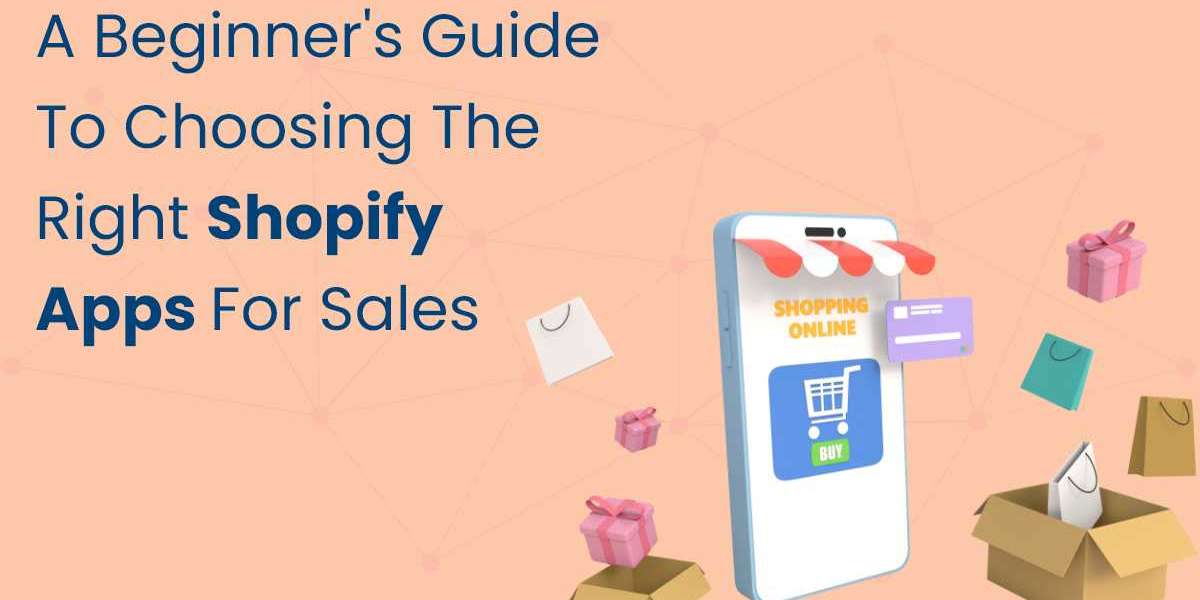Choosing the right Shopify apps is crucial for maximizing sales and optimizing your e-commerce store's performance. With thousands of apps available in the Shopify App Store, selecting the ones that align with your business goals can seem daunting. However, by understanding your needs and evaluating key criteria, you can effectively leverage Shopify apps to drive sales and enhance customer satisfaction. Here’s a comprehensive beginner’s guide to help you choose the right Shopify apps for boosting sales:
1. Define Your Business Goals
Before browsing through the best Shopify App Store, it's essential to define your specific business goals and challenges. Consider aspects such as:
- Sales Growth: Are you looking to increase overall sales, improve conversion rates, or boost average order value?
- Customer Engagement: Do you want to enhance customer experience, encourage repeat purchases, or build brand loyalty?
- Operational Efficiency: Are you focused on automating tasks, optimizing inventory management, or streamlining order fulfillment?
Identifying these goals will guide your app selection process and ensure that you invest in tools that address your most pressing needs.
2. Understand Your Budget and Resources
Evaluate your budget constraints and resource availability before committing to Shopify apps. While many apps offer free versions or trial periods, others require monthly subscriptions or one-time fees. Consider:
- Cost vs. ROI: Calculate the potential return on investment (ROI) from using specific apps compared to their costs.
- Scalability: Choose apps that can scale with your business as it grows, avoiding unnecessary expenditures on features you may not currently need.
3. Research and Explore App Categories
Explore the diverse categories of Shopify apps available, each catering to different aspects of e-commerce operations:
- Marketing and Sales: Includes apps for email marketing, social media integration, abandoned cart recovery, upselling, and cross-selling.
- Customer Support: Offers tools for live chat, helpdesk support, and customer feedback management.
- Store Optimization: Covers apps for SEO, analytics, A/B testing, and website performance optimization.
- Inventory and Order Management: Provides solutions for inventory tracking, order fulfillment, shipping, and logistics.
4. Read Reviews and Ratings
Take advantage of user reviews and ratings in the Shopify App Store to gauge app reliability and effectiveness. Look for:
- User Feedback: Reviews often provide valuable insights into an app’s usability, customer support quality, and overall satisfaction.
- Rating Trends: Check how consistently an app maintains its rating over time, indicating reliability and developer commitment.
5. Consider Integration and Support
Ensure that selected apps integrate seamlessly with your existing Shopify setup and other tools or platforms you use. Look for:
- Compatibility: Verify compatibility with your Shopify theme, payment gateways, and third-party services like accounting software or CRM systems.
- Developer Support: Choose apps backed by responsive customer support teams that can assist with setup, troubleshooting, and ongoing updates.
6. Start Small and Iterate
Avoid overwhelming yourself by installing too many apps at once. Start with a few essential apps that address immediate needs and gradually expand based on performance and user feedback. Consider:
- Pilot Testing: Experiment with apps using free trials or limited-time subscriptions to assess their impact on your sales and operations.
- Monitor Performance: Track key metrics such as conversion rates, average order value, customer engagement, and revenue growth to measure app effectiveness.
7. Seek Recommendations and Expert Advice
Seek recommendations from fellow Shopify merchants, industry forums, or e-commerce experts to discover underrated or niche apps that could benefit your business. Networking with peers can provide valuable insights into real-world app performance and use cases.
Conclusion
Choosing the right Shopify apps for sales is a strategic process that requires careful consideration of your business objectives, budget constraints, and operational requirements. By defining your goals, researching app categories, reading reviews, assessing compatibility, and starting with a manageable selection, you can optimize your Shopify store’s performance and drive sustainable sales growth. Continuously evaluate app performance, iterate based on results, and stay informed about new app developments to maintain a competitive edge in the dynamic e-commerce landscape. With the right combination of Shopify apps, you can enhance customer satisfaction, streamline operations, and achieve long-term success in your e-commerce ventures.





